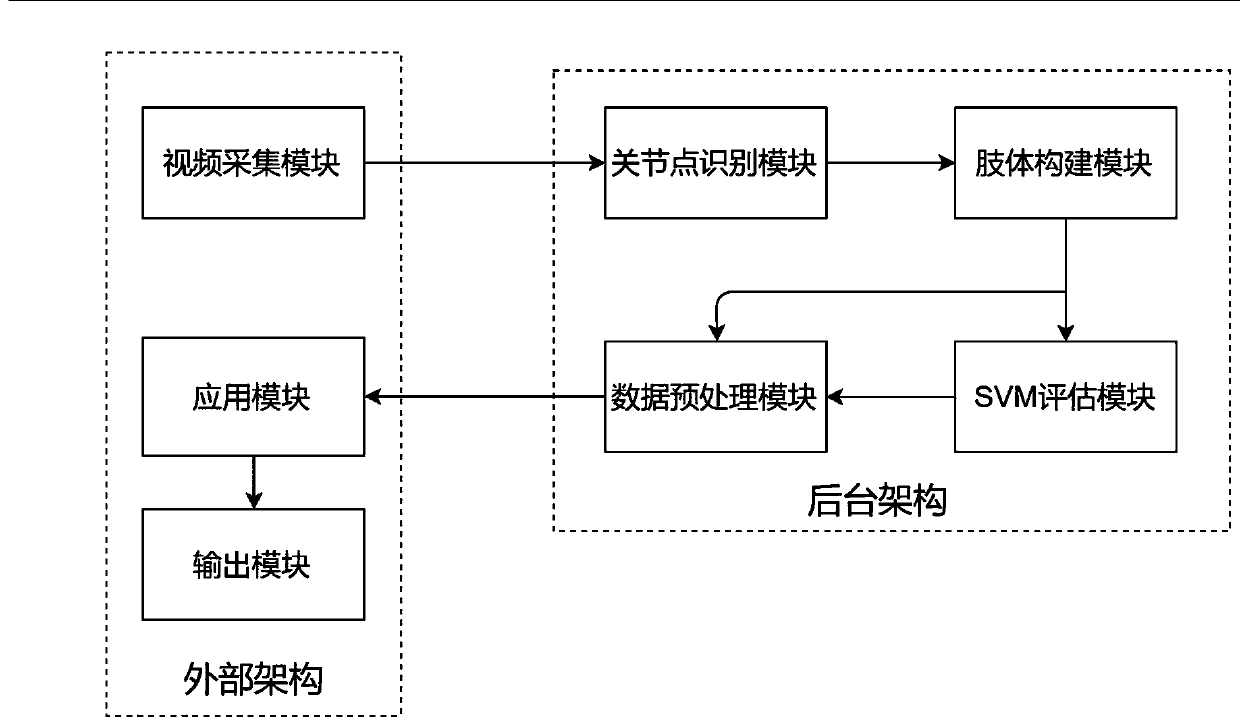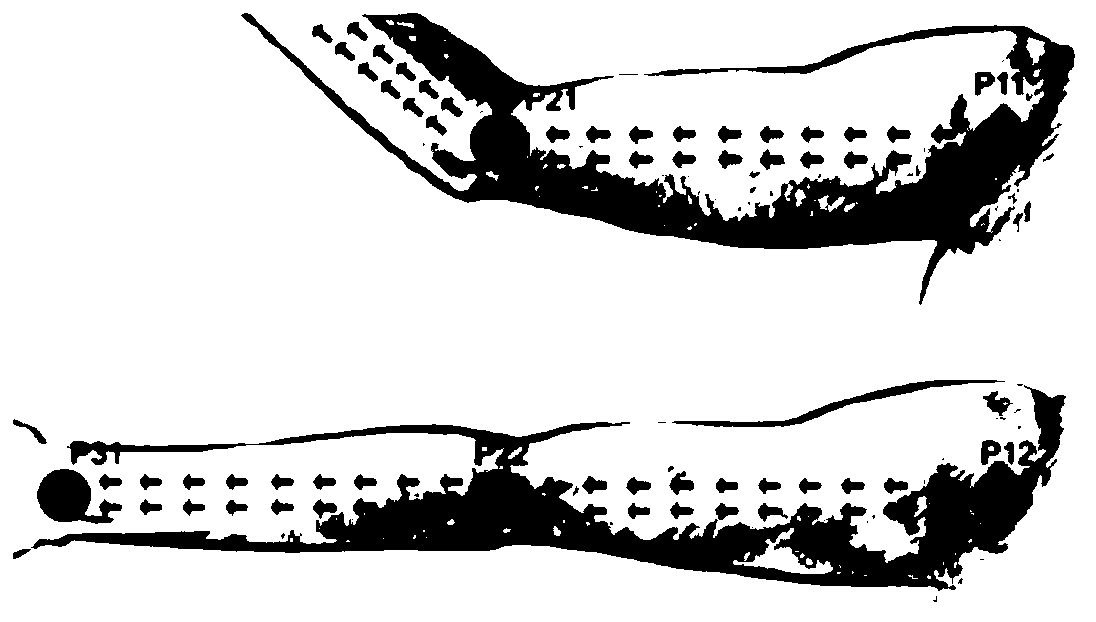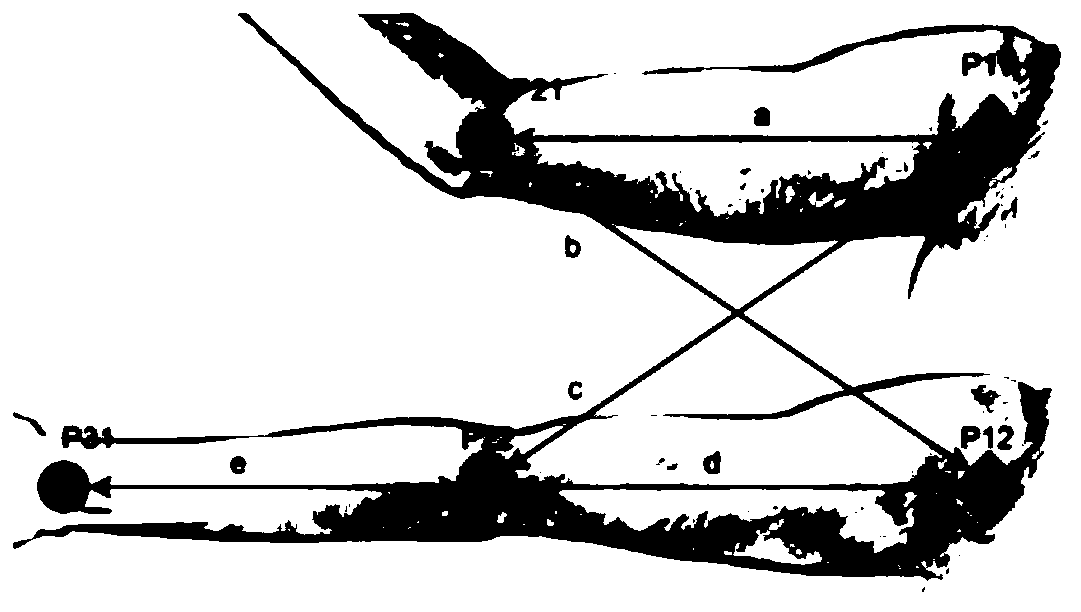Limb rehabilitation training auxiliary method and system, medium and equipment
A rehabilitation training and limb technology, applied in the application field of computer vision processing technology, can solve problems such as inconvenient wearing of auxiliary equipment, inconvenient installation process, physical injury of patients, poor practicability of auxiliary systems, etc., to achieve outstanding training effects and improved recognition accuracy. , the effect of improving the accuracy of gesture recognition
- Summary
- Abstract
- Description
- Claims
- Application Information
AI Technical Summary
Problems solved by technology
Method used
Image
Examples
Embodiment 1
[0050] In recent years, computer technology has made rapid advances and image recognition technology has become more mature. The 2D video image captured by the camera can be used to recognize human body gestures and accurately obtain the position and direction of the user's limbs. At the same time, the increase in computer computing power (that is, the speed of computer operations) and the enhancement of image processing technology have made real-time recognition of posture data for human-computer interaction a reality. In addition, the human body gesture recognition device is more convenient to use, has a larger recognition range, and is cheaper than a sensor device.
specific Embodiment approach
[0051] Such as figure 1 As shown, this embodiment provides a specific implementation of a method for assisting limb rehabilitation training based on human posture recognition, including the following steps:
[0052] Step 1. Use the color camera on the video capture module to capture the user's action posture, collect the user's action posture image and transfer the frame to the joint point recognition module in real time. In order to increase the processing speed and ensure real-time performance, the image will be reduced Pixels and processing to reduce the transmission frame rate. First, process the image pixels of the user's action posture, calculate the ratio of the length and width of the image pixels to the length and width of the sampled pixels (the pixel size is 256*256) as the interval length, and take the pixels on the original image according to the interval length to make the screen The size is fixed at a pixel size of 256*256, and the frame rate of the picture process...
Embodiment 2
[0069] Such as Figure 4 As shown, this embodiment is another implementation of the rehabilitation training auxiliary method, in this embodiment, keep figure 1 The basic structure of the system remains unchanged, and the external devices of the system (ie, video capture module, application module, output module) are replaced with mobile devices (can be mobile phones, tablets, etc.). The back-end architecture is built into a cloud server framework, and the external architecture and back-end architecture are connected through the network. The specific steps of this implementation are as follows:
[0070] Step 1. The mobile APP software obtains the permission of the mobile device camera. The mobile device camera captures the patient's rehabilitation training action picture data and delivers it to the real-time image processing module of the mobile APP. The real-time image processing module reduces the real-time image resolution and stream data (A set of sequential, large, fast, and c...
PUM
 Login to View More
Login to View More Abstract
Description
Claims
Application Information
 Login to View More
Login to View More - R&D
- Intellectual Property
- Life Sciences
- Materials
- Tech Scout
- Unparalleled Data Quality
- Higher Quality Content
- 60% Fewer Hallucinations
Browse by: Latest US Patents, China's latest patents, Technical Efficacy Thesaurus, Application Domain, Technology Topic, Popular Technical Reports.
© 2025 PatSnap. All rights reserved.Legal|Privacy policy|Modern Slavery Act Transparency Statement|Sitemap|About US| Contact US: help@patsnap.com



